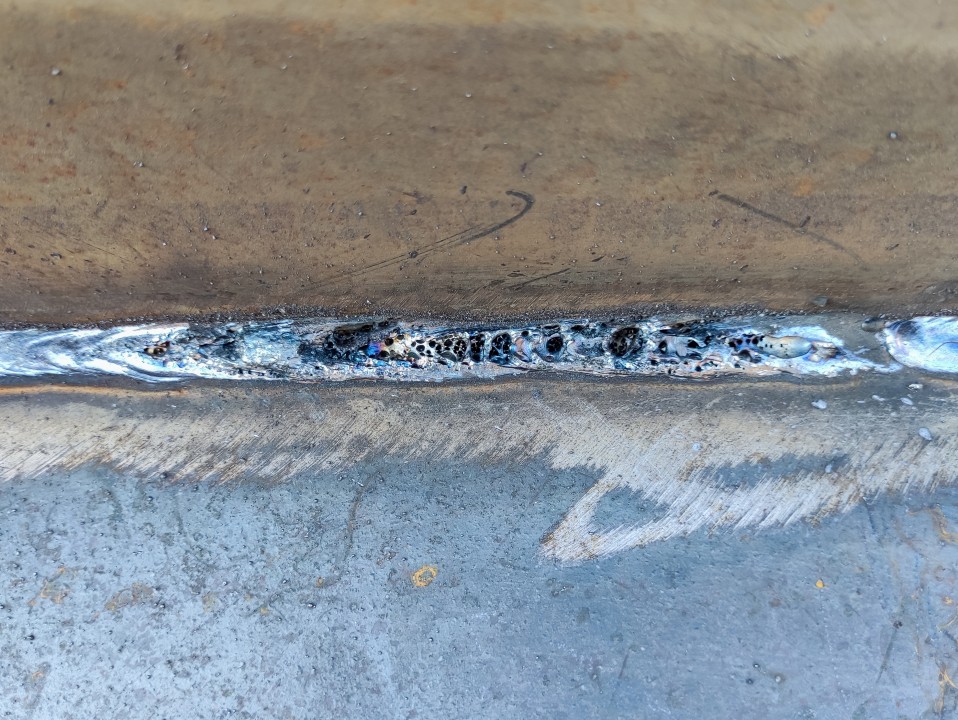What is Porosity in Welding: Usual Sources and Effective Solutions
What is Porosity in Welding: Usual Sources and Effective Solutions
Blog Article
Unraveling the Secret of Porosity in Welding: Tips for Decreasing Defects and Taking Full Advantage Of Quality
In the complex world of welding, porosity continues to be a consistent challenge that can dramatically impact the high quality and honesty of bonded joints. As we delve into the depths of porosity in welding, revealing the tricks to its avoidance and control will certainly be extremely important for experts looking for to master the art of top notch weldments.
Comprehending Porosity in Welding
Porosity in welding, a typical concern encountered by welders, describes the existence of gas pockets or voids in the welded product, which can compromise the integrity and top quality of the weld. These gas pockets are generally trapped during the welding process because of numerous aspects such as inappropriate shielding gas, polluted base products, or wrong welding parameters. The development of porosity can deteriorate the weld, making it vulnerable to splitting and deterioration, ultimately causing structural failures.
Recognizing the origin of porosity is essential for welders to efficiently stop its occurrence. By identifying the significance of keeping correct gas protecting, making sure the cleanliness of base products, and optimizing welding settings, welders can considerably lower the probability of porosity development. In addition, utilizing techniques like preheating the base material, employing correct welding strategies, and conducting comprehensive assessments post-welding can further assist in decreasing porosity issues. In general, a thorough understanding of porosity in welding is crucial for welders to generate top quality and durable welds.

Usual Reasons For Porosity
When inspecting welding processes for potential top quality issues, comprehending the typical reasons of porosity is essential for preserving weld integrity and protecting against structural failures. Porosity, defined by the visibility of cavities or gaps in the weld metal, can considerably compromise the mechanical residential properties of a bonded joint.
In addition, welding at improper criteria, such as excessively high traveling rates or currents, can create extreme turbulence in the weld swimming pool, trapping gases and triggering porosity. By dealing with these usual causes through appropriate gas shielding, material preparation, and adherence to optimum welding specifications, welders can reduce porosity and improve the quality of their welds.
Strategies for Porosity Avoidance
Carrying out reliable precautionary procedures is important in reducing the occurrence of porosity in welding processes. One technique for porosity avoidance is making certain correct cleaning of the base metal before welding. Pollutants such as oil, oil, corrosion, and paint can lead to porosity, so detailed cleansing making use of ideal solvents or mechanical techniques is essential.

An additional secret safety net is the choice of the best welding consumables. Utilizing high-quality filler materials and shielding gases that appropriate for the base steel and welding procedure can significantly decrease the danger of porosity. Additionally, keeping proper welding specifications, such as voltage, existing, travel speed, and gas circulation price, is crucial for porosity prevention. Deviating from the advised setups can lead to inappropriate gas protection and insufficient combination, learn the facts here now resulting in porosity.
Moreover, employing correct welding techniques, such as keeping a regular travel speed, electrode angle, and arc length, can help stop porosity (What is Porosity). Adequate training of welders to guarantee they comply with ideal techniques and quality assurance treatments is additionally vital in decreasing porosity defects in welding

Best Practices for High Quality Welds
One key practice is maintaining appropriate sanitation in the welding location. Completely cleansing the workpiece and bordering location before welding can assist minimize these problems.
An additional finest method is to carefully select the suitable welding parameters for the particular materials being joined. Appropriate specification selection makes official source certain optimum weld penetration, blend, and overall high quality. Using high-grade welding consumables, such as electrodes and filler steels, can significantly impact the final weld top quality.
Relevance of Porosity Control
Porosity control plays a vital role in making sure the honesty and high quality of welding joints. Porosity, defined by the visibility of dental caries or gaps within the weld steel, can considerably endanger the mechanical homes and structural integrity of the weld. Too much porosity compromises the weld, making it much more susceptible to fracturing, rust, and general failing under operational loads.
Efficient porosity control is important for preserving the preferred mechanical properties, such as toughness, ductility, and sturdiness, of the bonded joint. What is Porosity. By reducing porosity, welders can enhance the general quality and reliability of the weld, ensuring that it satisfies the efficiency requirements of the intended application
Moreover, porosity control is crucial for accomplishing the preferred visual appearance of the weld. Extreme porosity not only weakens the weld but additionally interferes with its aesthetic charm, which can be critical in markets where aesthetics are very important. Correct porosity control techniques, such as using the proper protecting gas, regulating the welding parameters, and making certain proper cleanliness of the base products, are essential for creating top quality welds with very little issues.

Verdict
Finally, porosity in welding is a typical issue that can jeopardize the high quality of the weld. By recognizing the reasons for porosity and carrying out correct avoidance methods, welders can reduce problems and achieve better welds. It is necessary to regulate porosity in welding to make certain the stability and toughness of the end product. this contact form Executing finest techniques for porosity control is vital for accomplishing optimum welding outcomes.
Report this page